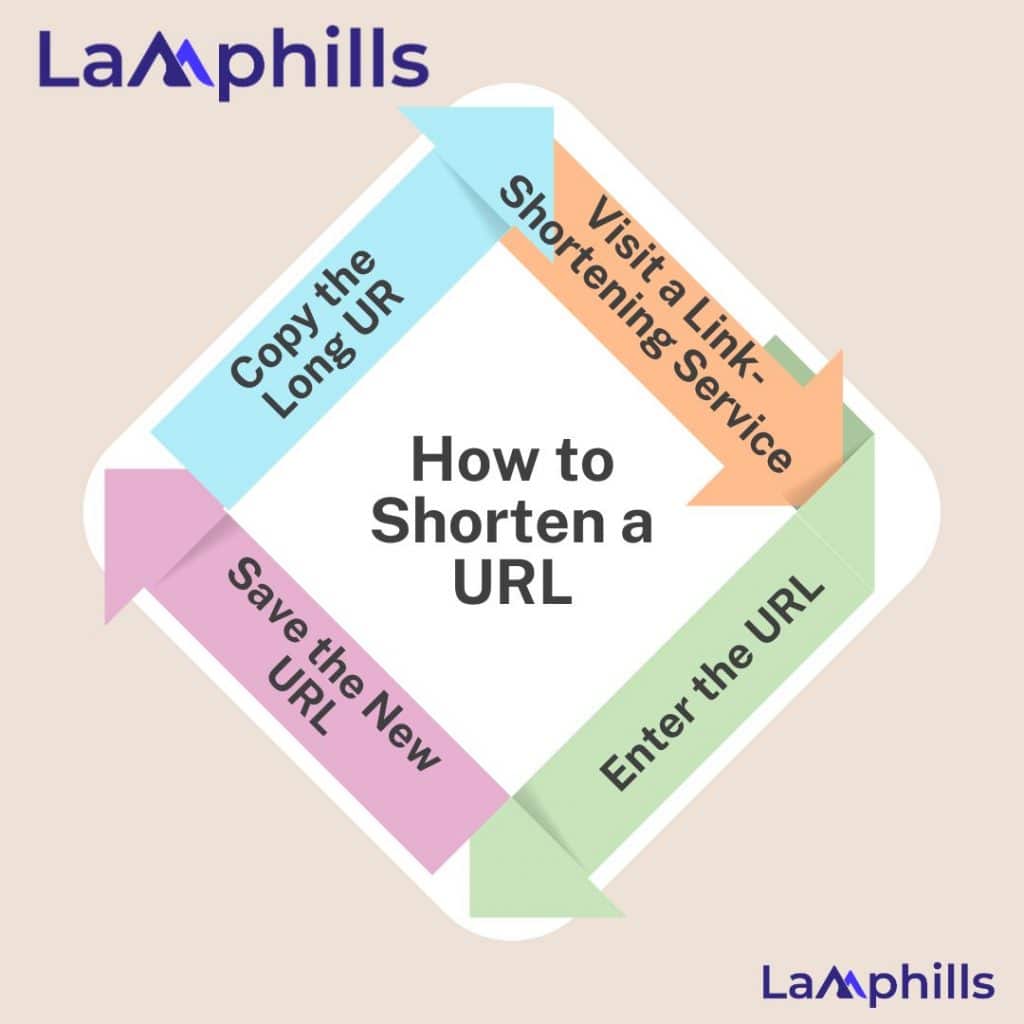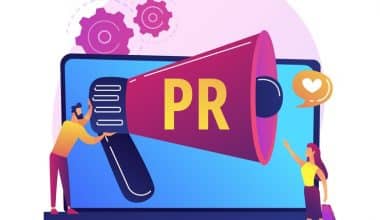Most people online have encountered a long, unwieldy URL that takes up too much space and looks unattractive. Imagine sharing a valuable resource on Twitter, only to find the URL gobbling up your precious character count or trying to paste a link in an email, and it looks more like a coding error than a helpful link. This is where URL shortening comes in, transforming those cumbersome links into neat, concise, and shareable ones.
Whether you’re looking to shorten a URL for free, streamline your Twitter posts, or make your Google links more manageable, there’s a simple solution waiting for you. But first, let’s dive into the basics of How to Shorten a URL Link and uncover the secrets behind this digital lifesaver.
Key Points
- URL shortening transforms long, cumbersome web addresses into shorter, more manageable links. This is particularly useful for social media platforms with character limits, such as Twitter, where a long URL can consume valuable space.
- Short URLs look cleaner and more trustworthy, avoiding the messy appearance of long links.
- Many URL shortening services offer tracking and analytics features. These tools allow users to monitor metrics like the number of clicks and traffic patterns, helping marketers refine their strategies and perform A/B testing to determine which links are most effective.
- Numerous URL shortening services are available, each catering to different needs. Some notable ones include Bitly for its comprehensive features, Rebrandly for custom branding, Dub for modern functionality, TinyURL for free and anonymous shortening, and BL.INK for business solutions, URL Shortener by Zapier for automation, and Short.io for custom domains and detailed analytics.
What Is a URL

Credit: storyset
A URL (Uniform Resource Locator) is a specific type of Uniform Resource Identifier (URI) that allows users to retrieve information from remote computers, such as web servers and cloud storage systems.
URLs comprise several components, including the network communication protocol (like HTTP or HTTPS), a subdomain, a domain name, and a domain extension.
Fortunately, website owners can modify their URLs. Crafting an effective URL can significantly enhance user experience and substantially improve search engine optimization (SEO). Therefore, optimizing URLs is an excellent strategy to elevate your website’s ranking on search engine result pages (SERPs).
Now, let’s check out what URL shortening is.
What is URL Shortening?

Credit: rawpixel
URL shortening is a method to take long, complicated web addresses and turn them into shorter, tidier ones that still direct you to the same place. For example, you can shorten a long URL like https://lamphills.com/landing/services/3/Launch%20PR-Event%20Management
The shorter URL looks cleaner and more trustworthy, avoiding a long link’s messy, spammy appearance. This is especially useful on social media platforms with character limits, like Twitter, where a long URL can eat up valuable space that could be used for sharing more information. For instance, you can only post Twitter tweets with 240 characters or less. An extended link leaves only a little room to explain it. But with a shortened URL, you have more space to provide context and engage your audience.
For example, you can change the above link to something more descriptive, like https://lamphills.com. You can use your domain name to make your links even more personal and branded.
What is a URL Shortener?
URL shorteners, also known as link shorteners, are online tools that take lengthy web addresses and convert them into shorter, more convenient links that are easier to share. These shortened links function as redirects to the original URL. Many URL shorteners, such as Bitly, are available for free or for paid services. Platforms like Twitter (formerly known as X) and WordPress often include automatic URL-shortening functionality.
Most general-use URL shorteners offer a free version with basic features like link shortening, while paid versions typically include advanced link tracking, bulk shortening, and campaign management tools.
But How Exactly Does a URL Shortener Work?
When you input a long URL into a tool like Bitly or any other tool, it generates a short URL with a unique identification code. This short URL is stored in a database along with the original URL. When someone clicks on the short URL, the original long URL is retrieved from the database, and the user is redirected to the original website.
URL shorteners shorten lengthy web addresses for convenience and make them more manageable. While some link shorteners only offer the shortening service, more advanced ones provide additional features such as tracking and analytics.
Download this comprehensive Custom URL Branding Checklist, which will guide you through the essential steps and best practices for custom URL branding.
Examples of Shortened URLs

Credit: Storyset
Shortened URLs are created by redirecting to a web page with a lengthy URL. For instance, the URL “https://lamphills.com/landing/services/3/Launch%20PR-Event%20Management” can be condensed to “https://lamphills.com.” Typically, the domain name of the redirect is shorter than the original one.
How to Shorten a URL
Shortening a URL is easy. Here’sHere’s how you can do it:

- Copy the Long URL: Copy the lengthy web address from your website, social media account, or any other source.
- Visit a Link-Shortening Service: Go to a website that offers URL-shortening services.
- Enter the URL: Paste your long URL into the provided field and request the creation of a short link.
- Save the New URL: Once the short URL is generated, save it for future use.
How to Shorten a URL Link for Free
How to Shorten a URL Link involves using Most URL shortening services that offer a free version. The process is simple: enter your long URL and receive a short one. Some social media apps, like X, automatically shorten URLs when you share them. Free URL shortening is ideal if you don’t need additional services and have fewer links to shorten.
Follow this step-by-step guide below to learn how to shorten a URL Link to shorten your URL link for free:
- Create or Log Into Your Site Account: If you still need to create an account, create one. If you do, log in.
- Select “Create New” Find and click on the option to create a new link.
- Tap “Link”: Choose the option to create a new link.
- Enter Your Long URL: Paste your long URL into the “Destination URL” box and select ” Next.”
- Customize Your Link (Optional): In the “Customize back-half” box, enter a custom word or phrase to personalize your link.
- Tap “”Create””: Click the “”Create”” button to generate your short link.
- Copy the Short URL: Click “Copy” to add the new short URL to your clipboard. You can now paste it wherever you need to.
Following these steps, you can easily create short, manageable links that enhance your online presence and streamline your marketing efforts.
How to Shorten a URL for Twitter
Twitter automatically uses its link shortener, t.co, whenever you share links. Here’s how it works:
- Copy and Paste Your URL: Copy the URL you want to share and paste it into your tweet, reply, or direct message.
- Automatic Conversion: Twitter’s t.co will automatically shorten the URL to 23 characters or less. This helps keep your tweets within the character limit, allowing you to include more content in your posts.
Safety and Security with t.co
T.co also enhances Security by scanning the links to ensure they lead to safe sites. If the destination website is flagged as unsafe, Twitter will warn users who attempt to click on the link.
Tracking Link Clicks with Twitter Analytics
After posting a tweet with a shortened URL, you can track its performance using Twitter Analytics. Here’s how:
- Access Twitter Analytics: On your tweet, click the button with three vertical bars at the lower right corner. This will open the Twitter Analytics pop-up.
- View Impressions and Engagements: The pop-up will show you the number of impressions and engagements your tweet has received.
- See Detailed Engagements: Click “View all engagements” for a detailed breakdown of engagement types, including link clicks.
Twitter’s t.co automatically tracks how many times your shortened link is clicked. This data is available in the Twitter Analytics section, helping you measure the effectiveness of your tweets and understand your audience’s behavior.
Read: Integrated Communication in the Digital Age
Can I Shorten a URL Myself?
Yes, you can use a Tiny URL. TinyURL is one of the sites that can help you quickly and easily make long URLs more manageable and aesthetically pleasing, mainly when space is limited, or you want to share a clean link.
- Visit TinyURL’s Website: Open your web browser and go to tinyurl.com.
- Enter Your Long URL: You’ll find a text box on the TinyURL homepage. Paste your long, unwieldy URL into this box. This is the URL you want to shorten.
- Create the Shortened URL: Click the “Make TinyURL!” button. TinyURL will then process your long URL and generate a shorter version.
- Copy and Use Your Shortened URL: The shortened URL will appear on the screen once the process is complete. You can now copy this short link and paste it wherever you need it, whether in emails, social media posts, or any other platform where a shorter link is more practical.
What is a URL Shortening Service?
A URL shortening service is an online tool that converts long, unwieldy web addresses into shorter, more manageable links. These short links contain a few alphanumeric characters, making them easier to share and remember. Despite the reduction in length, the service maintains the connection between the original long link and the shortened version, ensuring that users are redirected to the intended webpage.
Beyond simplifying URLs, many URL shortening services offer additional features like link tracking for analytics. This tracking allows users to monitor various metrics, including the number of clicks, traffic patterns, and other valuable statistics. Digital marketers often use these insights to understand which links are most effective and to A/B test different versions to see which resonates best with their audience.
Shortened links also facilitate link masking, which helps hide the original URL. This can be useful for various purposes, such as improving the appearance of links, enhancing tracking capabilities, and increasing clicks on affiliate links. By masking links, marketers can better analyze where their traffic is coming from and optimize their strategies to drive more sales or engagement.
The Best URL Shortener Services
Wondering how to shorten a URL link? Here’s the URL service you should try:
#1. Bitly
Bitly is a top choice for a comprehensive URL shortener, offering all essential features in one app. With over 15 years of reliable service, Bitly provides a comprehensive dashboard for tracking link performance, QR code generation, and a link-in-bio feature.
However, its free plan is limited to 10 monthly links, making it less appealing. The $35/month Growth plan includes a custom domain and 1,500 links per month, while the $300/month Premium plan offers 3,000 links per month and detailed analytics. Bitly integrates with Zapier, allowing automatic link generation and tracking.
#2. Rebrandly
Rebrandly is a solid alternative to Bitly, featuring a user-friendly interface and practical features. Its Essentials plan, offering 250 branded links per month for $14 or 500 links for $19, provides good value without requiring an annual payment upfront. Advanced plans offer greater control and analytics. Rebrandly also integrates with Zapier, facilitating automated link creation.
#3. Dub
Dub, a modern URL shortener launched in late 2022, offers a clean interface, keyboard shortcuts, and AI-powered URL suggestions. Its free plan includes 25 links and 1,000 tracked clicks per month, with up to three custom domains. The $24/month plan offers 1,000 links, 50,000 clicks, advanced link targeting, and custom social media cards, providing excellent value despite some features still in development.
#4. TinyURL
TinyURL is ideal for quick, anonymous use. It provides free URL shortening without requiring an account. It offers a simple and reliable Pro plan starting at $12.99/month for tracked links and branded domains.
#5. BL.INK
BL.INK caters to small businesses and enterprises with a full-featured URL shortener service, offering detailed analytics, link tagging, and dynamic links. Its free plan includes 1,000 active links, while paid plans start at $48/month, offering extensive link generation and tracking capabilities.
#6. Zapier’s
Zapier’s URL Shortener is perfect for automating link creation. It integrates with various apps to generate short links automatically. Included with a Zapier subscription, it simplifies automated workflows.
#7. Short.io
Short.io offers a robust free plan with 1,000 branded links, 50,000 tracked clicks, and device targeting. Paid plans start at $19/month and provide advanced features like geo-targeting and unlimited branded links.
Each URL shortener has unique strengths, catering to different needs and preferences, from comprehensive features and advanced analytics to quick, anonymous use and automated link creation.
These seven URL shorteners offer a range of features and benefits, catering to different needs, from casual users to business owners and digital marketing professionals. Whether you need a simple, free service or a robust tool with advanced analytics and branding capabilities, this list has a URL shortener to meet your requirements.
Read: 15 Best Inbound Marketing Tools That Can Save Your Business in 2025
The Benefits of Using Short URLs
Short URLs bring a range of advantages, from enhancing display and branding to boosting engagement and analytics. They support online and offline marketing efforts, improve your analysis capabilities, and elevate brand recognition. Let’s explore these benefits in more detail.
#1. Enhanced Display and Accessibility
Shortened URLs provide the clear advantage of better display and accessibility. They offer simple, clean links of about 10 to 30 characters, avoiding the pitfalls of long, complicated URLs. The improved aesthetics make short URLs appear neat and professional on platforms like Instagram, LinkedIn, X, and TikTok. Long URLs can clutter your text with confusing words and symbols, often breaking awkwardly across lines.
In contrast, short URLs are concise and easy to read, enhancing the overall readability of your content. The short links make it easier for your audience to click, copy, and share, which helps your content gain organic exposure on social networks.
#2. Boosted Marketing and Analysis
Short URLs enable enhanced tracking and analysis, especially when using a paid service. They also improve SEO and can lead to higher click-through rates. Many paid URL shortening services offer analytical data, allowing you to track link performance and gain valuable insights into audience engagement. This data helps refine your strategies by revealing visitor demographics and determining which social channels or posts drive the most traffic.
Furthermore, UTM tracking adds codes to your URLs to identify traffic sources, enhancing your reporting and helping you understand which content drives traffic, including a target keyword in shortened URL signals to visitors and search engines the topic of your page, improving search engine rankings. Shortened links are familiar and preferred on social media, increasing click-through rates and quickly yielding positive results.
Simplifying your URL structure also makes site navigation and expansion more manageable.
#3. Enhanced Branding
Short URLs significantly enhance your brand’s perception, engagement, and trust. Long, complex links can appear spammy or unprofessional, while short URLs present a polished image. Audiences are more likely to interact with a shortened URL, especially if branded. Short links convey a clean and professional image, positively influencing visitors’ perceptions of your brand. Shortened links that align with your brand’s digital marketing materials and social media enhance your content’s authority.
Branded links, which can include your company name or a word that reflects your brand’s identity, are used on social media, in SMS messages, at live events, and on printed materials to expand your reach. Clean URLs make your site or social media presence feel more trustworthy and authoritative, fostering greater audience trust.
Related Post
How to Set up Linktree on Instagram: The Ultimate Guide
Marketing Communications: Strategies to Amplify Your Brand’s Voice
Top 10 Free Linktree Alternatives for Savvy Content Creators






